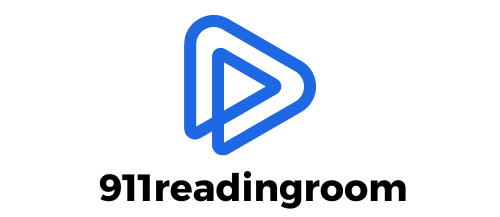People have been using glasses to enhance their vision for centuries, but what if this ancient technology could merge with the latest developments in the digital age? Can new-age smart glasses help the visually impaired in ways that traditional lenses simply can’t? Let’s explore this topic and envision a world where technology serves people in the most profound ways.
The Evolution of Glasses: From Vision Aid to Intelligent Device
Glasses have been aiding our vision for centuries, but technology has taken this humble accessory to new heights. Let’s start by understanding the evolution of glasses and what makes smart glasses so special.
Avez-vous vu cela : GPT chatbots: an asset for students in difficulty
Glasses were originally invented to correct vision, and they did their job exceptionally well for a host of vision impairments. However, with the advent of the digital age, the humble glasses have undergone a revolution. Today, they have evolved into smart glasses, a technology that could potentially change the lives of millions of people, especially those with visual impairments.
Smart glasses are wearable computer glasses that add information to what the wearer sees. They usually take the form of a pair of glasses with a heads-up display or a holographic display. But how do they work? Smart glasses use advanced technology such as object recognition and image recognition to interpret the world around the user. This could be as simple as reading text aloud or as complex as identifying the objects in the environment and providing acoustic feedback. Through these advanced features, smart glasses are offering new possibilities for the visually impaired.
A lire aussi : What are the advantages of chatbots for your WordPress site?
Smart Glasses and Object Recognition: Seeing the Unseen
Perhaps the most transformative aspect of smart glasses for the visually impaired is the ability to recognize and describe objects. Let’s take a deeper look into how this feature works and the difference it can make.
Object recognition in smart glasses uses a sophisticated combination of camera and software to identify objects in the real world. The glasses capture an image, and the software then processes this image to identify the objects present. This technology can recognize a wide variety of objects, from faces to household items, and even text in various languages.
For the visually impaired, this technology can be a game-changer. Imagine a visually impaired person walking into a room and the glasses describing the objects in the room, like a "blue sofa on the right, a wooden table in the center, a painting on the wall." This level of detail can give visually impaired people a new sense of autonomy and freedom in their surroundings.
Smart Glasses and Acoustic Feedback: Hearing the World
Smart glasses not only contribute to enhancing vision for the visually impaired but also play a crucial role in aiding them acoustically. Let’s delve into this aspect and understand how it contributes to the overall utility of the technology.
Smart glasses can use acoustic feedback to help the visually impaired navigate their environment. The glasses capture the image of the environment, and the software processes it to generate a 3D map of the surroundings. This map is then turned into sound, which can be played through headphones or speakers. The closer an object is, the louder the sound, helping the wearer understand the objects around them and their direction.
For instance, the glasses can generate different sounds for different types of objects. A chair might emit a low rumble, while a table might make a higher-pitched chirp. Over time, the wearer can learn to associate these sounds with different objects, making it easier to navigate their environment.
Smart Glasses and Text Recognition: Reading the World
Smart glasses can also use text recognition to read text in various languages aloud, making it easier for the visually impaired to access information. Let’s explore how this feature works.
Text recognition in smart glasses works in a similar way to object recognition. The glasses capture an image of the text, and the software then processes this image to identify the words present. The software can convert these words into speech, which is then read aloud to the wearer.
This feature can be incredibly useful for the visually impaired. For instance, they could use it to read the menu at a restaurant, the label on a medicine bottle, or even a book. This not only gives them greater independence but also opens up a world of information that might otherwise be inaccessible.
The Future of Smart Glasses: A Vision of Accessibility
As for what the future holds, smart glasses are only set to get smarter and more accessible. There’s a vision of the future where smart glasses aren’t just a tool for the visually impaired, but a standard piece of technology that we all use on a regular basis.
The potential of smart glasses goes beyond just object recognition, text recognition, and acoustic feedback. In the future, they could incorporate other technologies such as facial recognition, gesture control, and even augmented reality. These features could make smart glasses an essential tool for everyone, not just those with visual impairments.
Remember, innovation in technology has always been about breaking barriers and making lives better. Smart glasses, with their object recognition, acoustic feedback, and text recognition capabilities, can undoubtedly help realize this goal by improving accessibility for the visually impaired. It’s a testament to how technology can truly serve people and change lives for the better. The future looks bright, indeed!
Deep Learning and Assistive Technology: The Backbone of Smart Glasses
Deep learning is a subfield of artificial intelligence that is central to the operation of smart glasses. Let’s explore how this technology plays a pivotal role in creating a transformative experience for the visually impaired.
Deep learning is a type of machine learning that uses artificial neural networks to mimic the functioning of the human brain. This technology enables smart glasses to interpret complex patterns and learn from experience. The more data that these glasses are exposed to, the better they get at recognizing objects, interpreting text, and providing accurate audio feedback.
In the context of smart glasses for the visually impaired, deep learning powers the object and text recognition features. The glasses capture images of the environment, and the deep learning algorithms then process these images to detect and identify objects. This information is then fed back to the user in real-time, giving them a detailed picture of their surroundings.
The potential of deep learning in assistive technology is vast. It allows the visually impaired to not only see the world around them but also interact with it in meaningful ways. Whether it’s recognizing a friend’s face, reading a sign, or finding their way around an unfamiliar place, smart glasses powered by deep learning could be a life-changing tool for the visually impaired.
Envision Glasses and Acoustic Touch: A New Reality for the Blind
Envision Glasses, a new entrant in the smart glasses market, promises to revolutionize the lives of blind and low-vision people with its unique feature – acoustic touch. Let’s understand what this means and how it could enhance the user experience.
Acoustic touch is a technology that uses sound waves to detect the presence and location of objects. In the context of Envision Glasses, this technology is used to provide tactile feedback to the user about their environment. When the user points their finger at an object, the glasses emit a sound wave that bounces off the object and returns to the glasses. The glasses then convert this sound wave into a vibration that is felt by the user. This allows the user to "touch" the object without physically touching it.
This technology could be a game-changer for blind people. For instance, it could help them navigate unfamiliar environments, identify objects, and even interact with touchscreens. With acoustic touch, blind people could experience a whole new level of independence and engagement with the world.
Conclusion: The Dawn of a New Era in Assistive Technologies
From providing a detailed picture of the surroundings for the visually impaired to allowing blind people to ‘touch’ the world through sound, smart glasses are redefining the norms of assistive technologies. With features like object recognition, acoustic feedback, and text recognition, they truly represent a new era in assistive technology.
The development of smart glasses, such as Envision Glasses, is a testament to how artificial intelligence, deep learning, and other cutting-edge technologies are breaking barriers and changing lives. With the integration of acoustic touch and advancements in computer vision, these glasses are not just aids for the visually impaired but also a tool that could be used by everyone in their daily lives.
As we look ahead, it’s clear that the future of smart glasses and assistive technology is bright. The potential is vast, and with ongoing technological advancements and increased accessibility, smart glasses are on a trajectory to become an everyday accessory in the near future. The dream of a world where technology is seamlessly integrated into our lives, making it easier for everyone, irrespective of their physical limitations, is not too far off. The dawn of a new era in assistive technologies is indeed upon us.
















